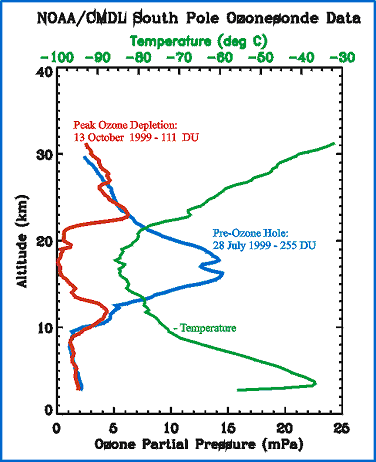
If you follow the links on this page, you will find the data you need to answer the questions in Part I of your midterm exam.

If you follow the links on this page, you will find the data you need to answer
the questions in Part I of your midterm exam.
If you don't have graph paper, you will find paper to print here. You also may use spreadsheet software such as Excel to generate your graphs and tables.

Question #1. The following are links to images derived from the Nimbus-7-TOMS spectrometer showing the averages of the total ozone concentration for the month of October for the years 1979-1992. A color scale for ozone concentration is provided for each image.
Question #2.
The UV Index is a simple and informative way of describing the daily danger of solar UV radiation intensity. Australia's Commonwealth Bureau of Meterology's UV forecast gives the index value for midday when the sun's radiation is most intense.
This is a typical UV Index graph:
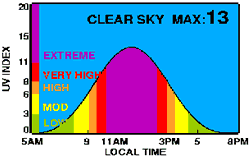
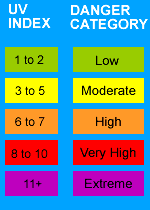
The following were the May 17, 2004 UV Index predictions for a number of Australian localities.
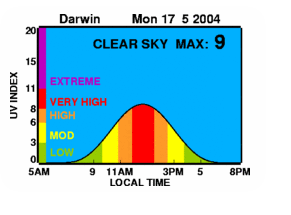
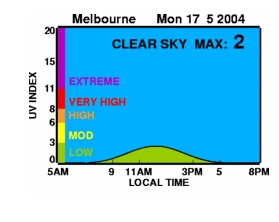
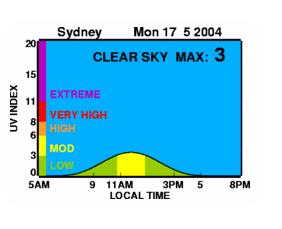
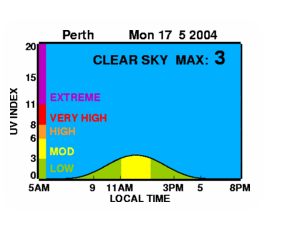
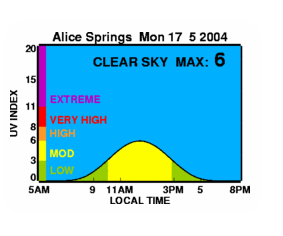
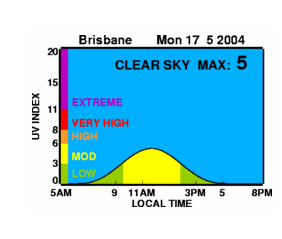
The following table allows you to convert the UV index into the number of minutes of sunshine it takes before unaccustomed skin not protected by sunscreen starts to color red ("sunburn").
| Skin type 1 Maximum time in the Sun = 67 minutes / UV index |
Skin type 2 Maximum time in the Sun = 100 minutes / UV index |
| Skin type 3 Maximum time in the Sun = 200 minutes / UV index |
Skin type 4 Maximum time in the Sun = 300 minutes / UV index |
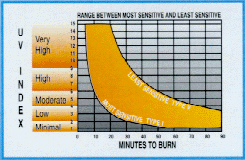
Use the following characteristics to identify your skin type:
| skin type I | very fair complexion, freckles, often reddish hair, hardly tans, extreme disposition to sunburn |
| skin type II | fair complexion, seldom freckles, tans little, high disposition to sunburn |
| skin type III | fair to light brown complexion, no freckles, tans well, low disposition to sunburn |
| skin type IV | light brown to olive colour complexion, no freckles, tans very well, hardly any disposition to sunburn |
The SPF (Sun Protection Factor) value of a sunscreen is a factor which allows you to calculate the theoretical number of minutes you can extend your "burn time". You can learn about SPF here.
You can learn more about the effect of sun from the EPA here.
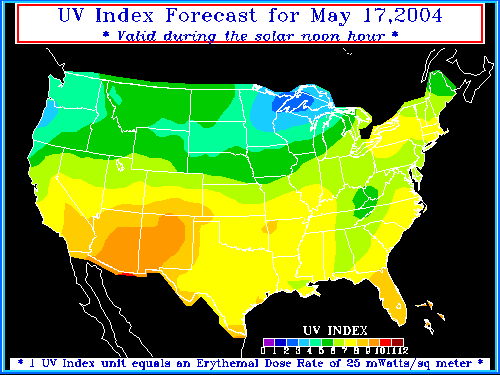
Erythemal irradiance (mW/m2) or "dose rate" indicates the instantaneous amount of skin damaging UV radiation.
.Question #3.
Obtain South Pole Ozone Profiles here. The total ozone values for part (a) are the numbers listed at the top of each graphic. The values for part (b) will be read off the graph for the different altitudes.
For part (e) this is a graph of DU of ozone vs. time for the stratospheric region 12-20 km:
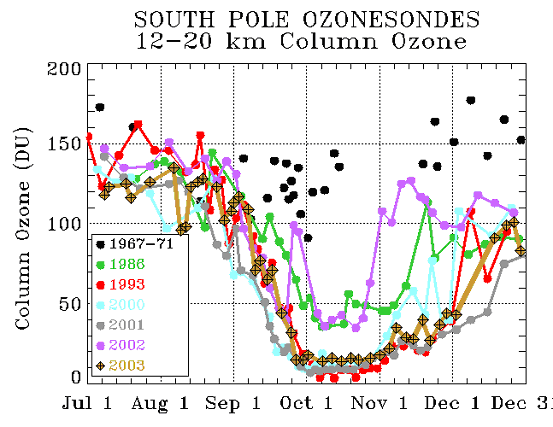
The following graphs (used in part f) show the area within the polar vortex that has a temperature low enough to form Polar Stratospheric Clouds (PSCs).
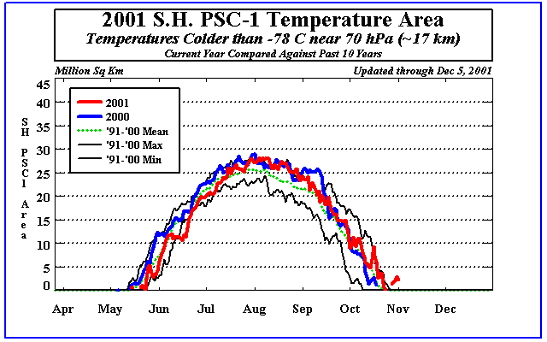
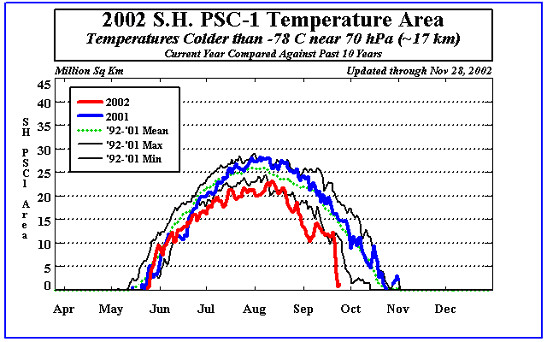
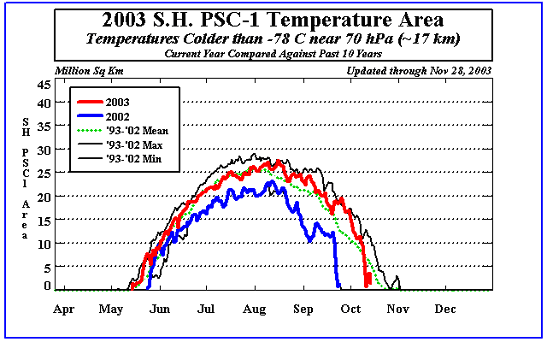
The following graphs (for part f) show the area of the polar vortex 2001-2003
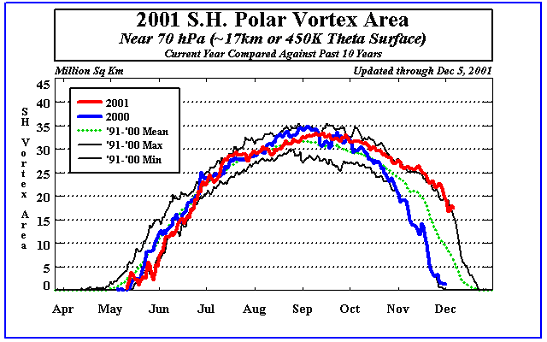
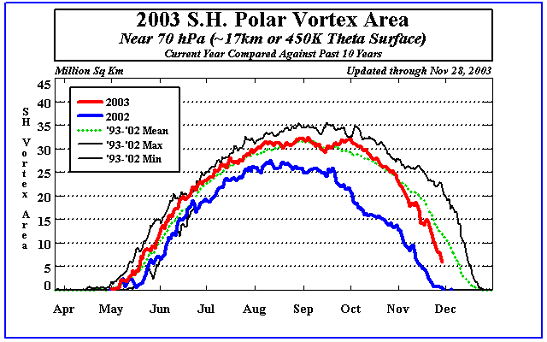
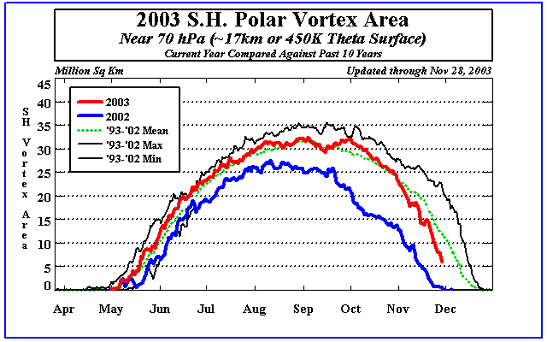
This graph shows the vertical profile of ozone over the South Pole when the "ozone hole" becomes well established (use in part d).
